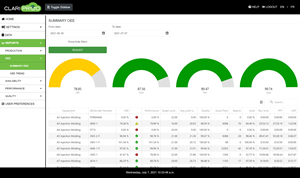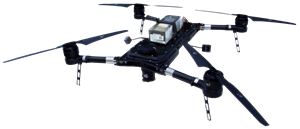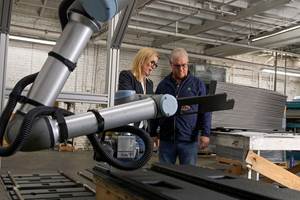No. 22 - Takeout Robots
Automated part takeout was said to originate in Japan in 1967 with Sailor Pen Co., one of the first manufacturers in the region to use injection molding presses.
Automated part takeout was said to originate in Japan in 1967 with Sailor Pen Co., one of the first manufacturers in the region to use injection molding presses. The company, which began molding parts for its fountain pens and ink cartridges in 1949, developed an automatic extraction robot to improve parts handling. In 1969, it introduced the RX-0 extraction robot for sale. This pneumatic swing-type model (similar to a sprue picker) gained wide popularity in Japan due to post-war labor shortages. From 1969 to ’71, Harmo, Star, and Yushin also started making robots.
Pressures on labor cost and availability in the U.S., as well as trends toward larger and more complex injection molded parts that required special handling in stead of simply falling out of the mold, drove U.S. molders to try automated parts handling in the early 1970s. The first units were pneumatically driven, top-mounted systems with relay controls and limited flexibility.
Takeout robots attracted attention at NPE 1973, where models with up to five axes were exhibited by Reed-Prentice and Toyomenka. In 1976, robots first appeared in Plastics Technology’s annual Manufacturing Handbook & Buyers’ Guide, which listed only Martin Industries (later Conair Martin) in Chicopee, Mass., as having a truly plastics-oriented robot.
From the mid-’70s to early ’80s, manufacturing quality and productivity issues drove the adoption of takeout robots in the U.S. Robots allowed a consistent molding cycle, eliminating operator variability. The occupational safety regulations of the 1970s added an incentive to keep operators out of the press. (Traversing takeout robots also started appearing on large industrial blow molders by the mid-1970s.)
From Japan, the first standard traversing-type robots were introduced around 1975, which allowed for a greater range of automated operations. Around 1977, Automated Assemblies, a venture of custom molder Nypro, began selling robots. Nypro claims that starting in 1981 it was the first U.S. plastics firm to put a robot on every press.
In Europe, robots were introduced by Witt mann in 1976 and Remak in 1978. At the K ’79 show in Dusseldorf, robots accompanied many injection mold ing exhibits. Around 1980, Con air brought out its first robot, the Automate, a cam-operated, side-entry unit. Husky became the first injection press builder in North America to offer its own robots. Battenfeld, Bucher, Engel, and others soon followed.
In 1981, Nelmor Div. of AEC and the new Sterltech Div. of Sterling Inc. began marketing robots for insert loading and parts removal. Also in 1981, Thermwood Corp. introduced a moderately priced jointed-arm robot with simplified “lead-through” programming. Robots “stole the show” at both Interplas ’81 in Birmingham, England, and NPE 1982, with a great variety of traversing and jointed-arm models.
In 1983 came speedier pneumatic cylinders, as well as electric servo drive systems that promised even higher speed and precision. Servos also allowed position setpoints to be set electronically instead of setting mechanical stops.
The year 1985 saw the arrival of telescoping arms that accommodated low ceilings. At the same time, companies such as Yushin introduced “hybrid” air and electric drive systems. Robot programmability and functionality progressed in the mid-1980s with the introduction of programmable logic controllers, which allowed for easier sequence programming, quick program changes, and easier incorporation of secondary operations such as stacking, packing, decorating, and assembly. All-servo robots came onto the market from Japan at the end of the 1980s. Today, around 95% of takeout robots are all or partly servo driven.
An estimated 80% of the injection molding firms and 40% of the presses in the U.S. have takeout robots. In Japan, 100% of molding shops and 80% of the presses use robots. Europe is said to be somewhere in between.
Related Content
Real-Time Production Monitoring as Automation
As an injection molder, Windmill Plastics sought an economical production monitoring system that could help it keep tabs on its shop floor. It’s now selling the “very focused” digital supervisor it created, automating many formerly manual tasks.
Read MoreHow Was K 2022 for Blow Molding?
Over a dozen companies emphasized sustainability with use of foam and recycle, lightweighting and energy savings, along with new capabilities in controls, automation and quick changeovers.
Read MoreDrones and Injection Molding Ready for Takeoff
Drones and unmanned aerial vehicles (UAV) are approaching an inflection point where their production volumes — and functionality — will increasingly point to injection molding.
Read MoreCobot Creates 'Cell Manufacturing Dream' for Thermoformer
Kal Plastics deploys Universal Robot trimming cobot for a fraction of the cost and lead time of a CNC machine, cuts trimming time nearly in half and reduces late shipments to under 1% — all while improving employee safety and growth opportunities.
Read MoreRead Next
People 4.0 – How to Get Buy-In from Your Staff for Industry 4.0 Systems
Implementing a production monitoring system as the foundation of a ‘smart factory’ is about integrating people with new technology as much as it is about integrating machines and computers. Here are tips from a company that has gone through the process.
Read MoreAdvanced Recycling: Beyond Pyrolysis
Consumer-product brand owners increasingly see advanced chemical recycling as a necessary complement to mechanical recycling if they are to meet ambitious goals for a circular economy in the next decade. Dozens of technology providers are developing new technologies to overcome the limitations of existing pyrolysis methods and to commercialize various alternative approaches to chemical recycling of plastics.
Read More













.png;maxWidth=300;quality=90)









